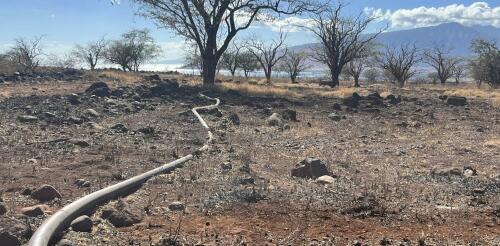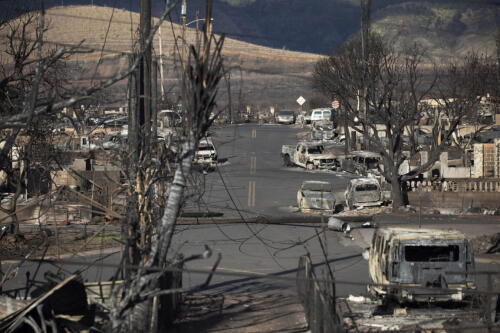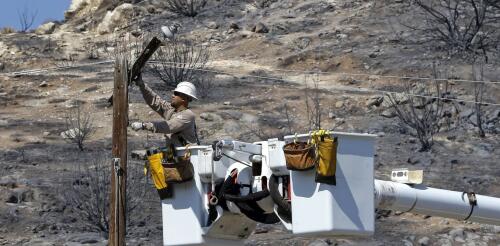Hawaii
The wildfires that burned across Maui, Hawaii, in August 2023 became the deadliest conflagration in the United States in more than a century. While the harm to homes and tourism drew the most attention, agriculture was also heavily affected across the island, and the harm did not stop once the flames were out. In some cases, fires smoldered underground for weeks. Water systems were destroyed, and some were contaminated in ways scientists are only beginning to understand. Two weeks after the Maui fires began, they were still smoldering below ground. Andrew Whelton/Purdue University, CC BY-ND As an environmental engineer, I work with communities affected by wildfires and other disasters. I also led a team of university and public works professionals to assist in Maui’s response to the fires. In a new study based on that effort, my team worked with the Hawaii Department of Agriculture to assess d...
Fountains of lava erupted from the Sundhnúkur volcanic system in southwest Iceland on Jan. 14, 2024. As the world watched on webcams and social media, lava flows cut off roads and bubbled from a new fissure that invaded the outskirts of the coastal town of Grindavík, burning down at least three houses in their path. Nearby, construction vehicles that had been working for weeks to build large earthen dams and berms in an attempt to divert the lava’s flow had to pull back. The lava flow on Jan. 14, 2024, with Grindavík in the foreground. Iceland Department of Civil Protection Humans have tried many ways to stop lava in the past, from attempting to freeze it in place by cooling it with sea water, to using explosives to disrupt its supply, to building earthen barriers. It’s too soon to say if Iceland’s earthworks will succeed in saving Grindavík, a town of about 3,...
It is not clear what the trigger was, but the flames spread thanks to invasive plants
Wildfires destroyed the Hawaiian tourist town of Lahaina on Aug. 8 and 9, 2023, leaving many of its roughly 13,000 residents homeless. Fires also burned in other areas on Maui, Hawaii’s second-largest island, and its Big Island. President Joe Biden issued a disaster declaration on Aug. 10, which authorizes federal aid for communities in harm’s way. The Conversation asked Ivis García, an urban planner who has researched disaster recovery efforts in Puerto Rico, to explain how the U.S. government responds to disasters like these and how Maui’s geography could interfere with aid delivery. Is it harder for aid to reach an island than the US mainland? The Federal Emergency Management Agency, which delivers emergency assistance after disasters, has to deal with big transportation challenges in cases like this. Initially, FEMA will be focused on bringing food, generators, cots, meals and anything else people need, and that aid will be arriving on planes and boat...
Maui County is suing Hawaiian Electric, claiming the utility was negligent for not shutting off power as strong winds hit the island in the hours before the city of Lahaina burned. While the cause of the devastating Aug. 8, 2023, wildfire is still under investigation, forecasters had warned that powerful winds were expected, and West Maui had exceptionally dry conditions that put it at high risk for wildfires. In many cases, however, deciding to shut off power isn’t as simple is as it might sound. We asked Tim Lieuwen, executive director of the Strategic Energy Institute at Georgia Tech, about the risks and trade-offs utilities have to weigh in deciding how to respond during fire-risk conditions. Why are utilities so often suspected in fires? There are a lot of ways that utility lines, particularly high-voltage lines, can spark fires. If tree branches are too close to the lines, electricity can arc between the line and the tree. Old equipment can set off sparks. If the w...




